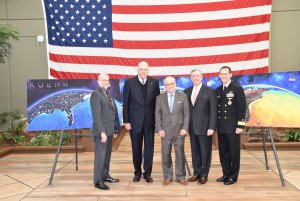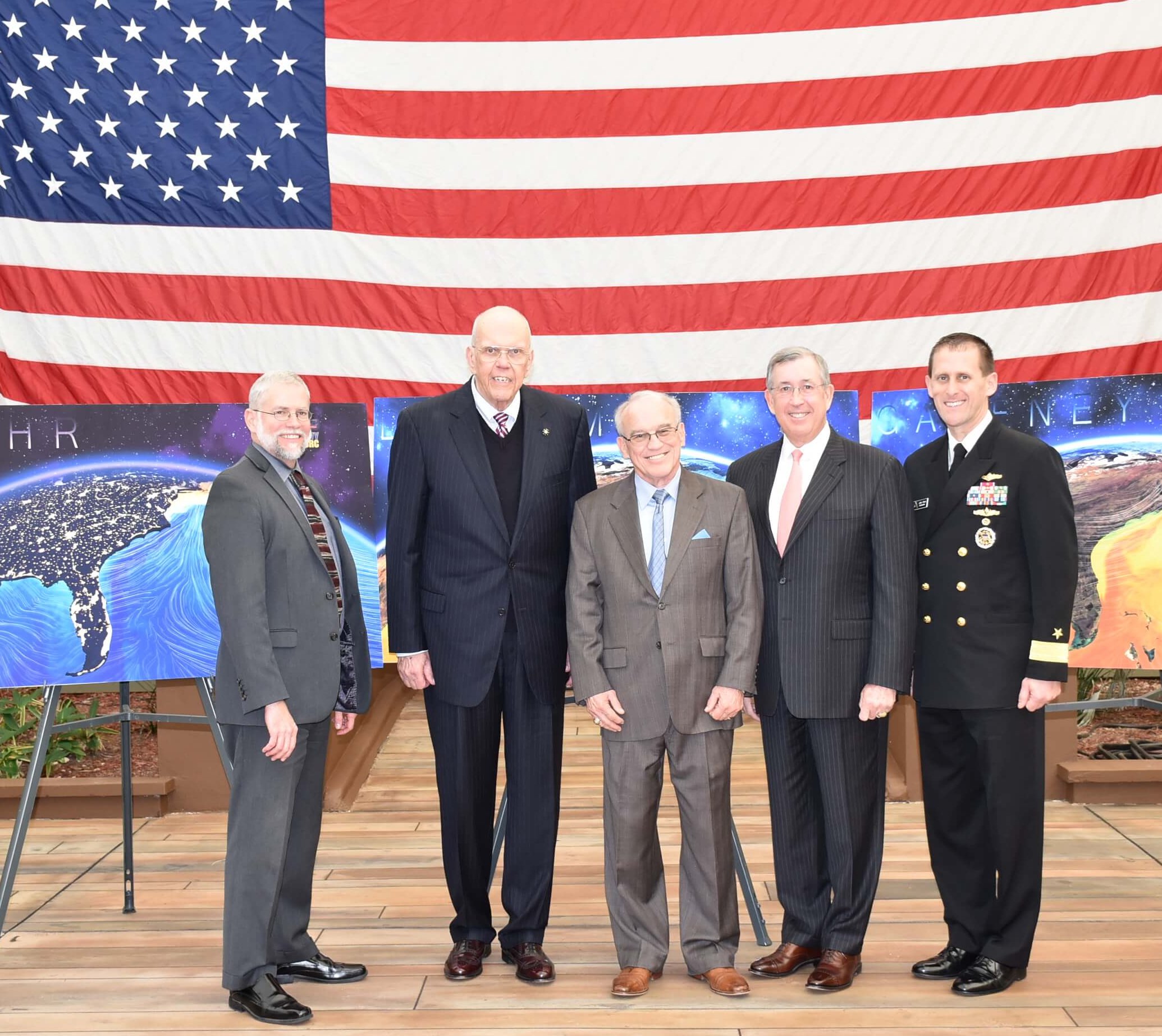
Monmouth University President Emeritus Paul G. Gaffney II was a member of the first class of three honorees inducted into the Naval Meteorology and Oceanography Hall of Fame during a Jan. 25 ceremony at the John C. Stennis Space Center in Mississippi, according to a Naval Meteorology and Oceanography Command press release.
Vice Adm. (ret.) Gaffney served as commander of the Naval Meteorology and Oceanography Command (NMOC) from 1994 to 1997. He became the first naval oceanographer to attain the rank of vice admiral. Gaffney is credited with attaining the visionary goal of making Naval Oceanography a world-class supercomputing facility and delivering three oceanographic survey ships into the operational fleet—USNS Pathfinder, USNS Sumner and USNS Bowditch.
“Our competitors strive to shake our confidence. In order to keep our confidence from being shaken we must know what’s happening in the undersea domain. We have that here at Naval Oceanography and no other nation does,” Gaffney said.
Rear Adm. John Okon, commander, NMOC, hosted the Hall of Fame ceremony, where a group of new supercomputers was named after the Naval Oceanography legends.
“We establish the Naval Meteorology and Oceanography Hall of Fame to preserve history, honor excellence and connect generations,” Okon said. “When it came to selecting the first class we had over 30 years to cull over, and we knew this class would be like none other. They are the stalwarts of the community and the Navy, and I am humbled they are here with us today.”
Gaffney was one of three inductees honored at the ceremony. Rear Adm. (ret.) James Koehr, who commanded then-named Naval Oceanography Command from 1984 to 1991, and Dr. Donald Durham, the Naval Meteorology and Oceanography Command’s technical/deputy director from 1989 to 2002 and senior civilian executive/top scientific advisor, were also recognized.
The ceremony was attended by current and former staff members, some of whom served with the inductees. The program also included the unveiling of and ribbon-cutting on the newest Department of Defense Supercomputing Resource Center’s supercomputers that were installed in 2018 and named after Gaffney, Koehr, and Durham. These latest installations will now provide users with nearly seven petaflops (a unit of computing speed) of computing capability and are among the fastest supercomputers in the world.
Gaffney graduated from the U.S. Naval Academy in 1968 and earned a master’s degree in ocean engineering from Catholic University of America and an MBA from Jacksonville University. He is an ocean policy fellow with Monmouth University’s Urban Coast Institute.
Naval Oceanography has approximately 2,500 globally distributed military and civilian personnel, who collect, process, and exploit environmental information to assist Fleet and Joint Commanders in all warfare areas to guarantee the U.S. Navy’s freedom of action in the physical battlespace from the depths to the stars.

